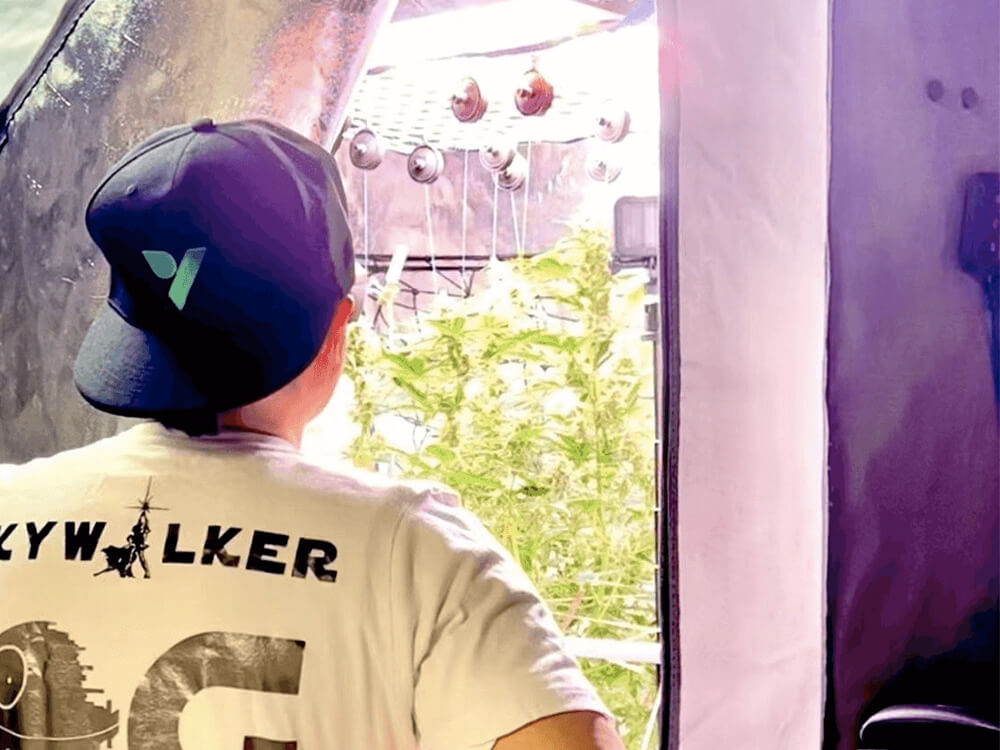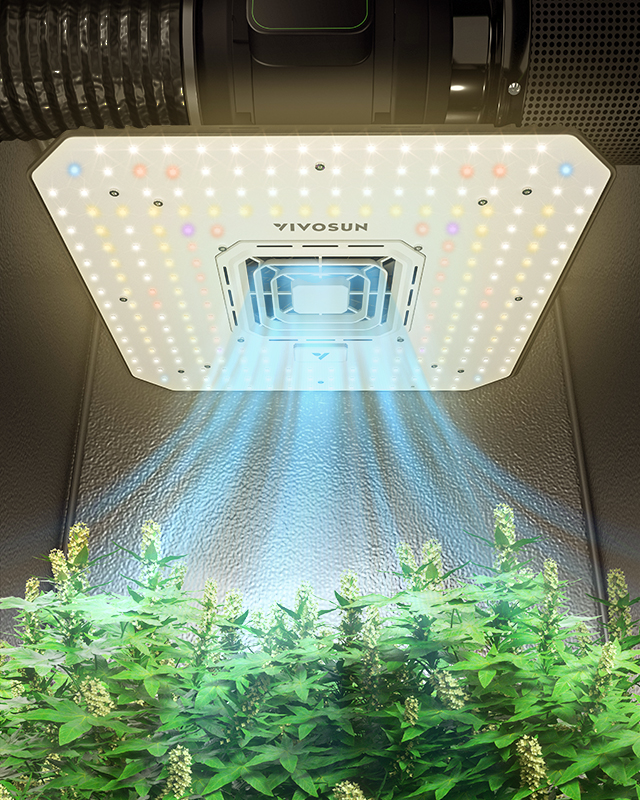LED grow lights are a great choice for cultivating a variety of plants in your grow tent. Surprisingly, growing plants indoors with LED lights have a number of benefits over growing outdoors. Growing in a grow tent has the added benefits of being able to control light and day and night cycles, watering cycles, and airflow.

When you grow indoors you can provide the exact amount of light your plants require, you can have longer day cycles to increase the amount of energy available to your plants, you can ensure that plants have the right mixture of nutrients, are protected from pests, and that the elements will not damage your crops.
There is a common belief that plants grown indoors will not have enough light, however we can address this by using LEDs or other chemically-reactive sources for light that can produce a more specialized spectrum for lighting than the Sun. Grow lights provide the unique benefits that you are able to both control the amount of energy your plant receives, a more precise day-night cycle, and allows you to grow exotic and specialized plants anywhere in the world.
What are LED grow lights?
Let’s start off with a definition: what is an LED? LED stands for light-emitting diode. When an electrical current flows through the semiconductor diode on an LED board it produces light; grow lights have a lot of these diodes on a single board so that they can produce a lot of energy as photoreactive light.
LED grow lights are designed to produce a specific wavelength of the light spectrum that is usable for plants, emphasizing blue and red wavelengths. This is done by building a computer chip connected to two different types of semiconductors, one with a positive charge and the other with a negative charge, that are separated by what is called a “band gap,” small empty spaces that perforate the surfaces of the semiconductors.
When electricity (specifically, electrons) flow to the chip through the semiconductors, their charges are stimulated by the positive and negative surfaces. When they combine together again, they release energy in the form of a photon of light. This is how an LED creates light. This light can be designed to have the specific wavelengths that are most useful for plants in various stages of growth, so you can provide your plant with the perfect spectrum for photosynthesis.
What is the best color for growing indoors?
Natural sunlight contains the full spectrum of light, including all colors of the rainbow and even non-visible light like infrared and UV. When we use LED grow lights for indoor growing, we want to mimic natural sunlight as closely as possible, to create the perfect growing environment for our plants, even better than what we could find outdoors. Because we want to mimic the perfect growing environment for our plant, we should copy the natural environment of our plant while using a light source that produces a full spectrum of light.
The color of the light is one of the most important aspects that affect indoor growing. The two colors red and blue are on either end of the spectrum, and they have different effects on your plant. Further, your plants will utilize certain colors at various stages in the grow cycle: for example, plants utilize blue light to grow new leaves and to stretch stems and branches, while they use red light to produce buds and flowers.
A good grow light will need to produce sufficient red and blue light as these parts of the spectrum are extremely important to plant growth, while plants reflect a lot more green and yellow light, which is what gives them their color. During the process of photosynthesis, plants usually respond to 400 and 700 nanometer wavelengths, which, coincidentally and very useful for growers, corresponds to the visible portion of the light spectrum.
What is the best light intensity for the indoor grow?
The intensity of light that a plant obtains is determined by bulb brightness and the distance from the plants to the light. Of course, different plants need different light intensity. Usually, plants that grow in northern climates do not need as much light as plants that grow in tropical areas.
As a quick reference, 10 to 12 inches of distance between the light source and the plant is suitable for a lot of houseplants like begonias, ivies. Other plants like philodendron can have a light source up to 36 inches away and still grow happily. On the other hand, some vegetables require a much higher light intensity before they will be able to flower or grow usable products..
The Benefits of using LED grow lights
Many people think houseplants can live just by natural light coming through the window. However, if you would like your plants to grow healthy and beautiful and to produce a larger quantity of flowers or fruit, an additional light source will be helpful. Using LED grow lights for indoor growing is the most efficient way of replicating sunlight. So what are some benefits of using LEDs?
- They are more efficient. LED grow lights use just half of the energy required for fluorescent grow lights. They are better for the environment and they are less taxing on electricity bill.
- They have a higher light intensity. You won’t need to move your LED lights around as your plants grow as you might with fluorescent lights since they emit enough energy to sustain your plant through its entire growth cycle.
- They create less heat. LEDs can emit less heat than fluorescent bulbs. LEDs operate 80% cooler than fluorescent bulbs. Why is this important? Because excessive heat leads to higher ambient temperatures, higher electricity bills, a higher potential to burn your plants, and more difficulty controlling the humidity. Additionally, when your lamp is cooler you can move it closer to your plants, which increases the amount of available energy for the plant.
- Longer lifespan. LEDs live for up to 50,000 hours of use, that equals over 2,080 days of full-time use, Fluorescent bulbs, HPS, CMH, and MH bulbs last 1/5 the amount of time of the LED, making LEDs much more cost-effective over time and reducing harmful waste in the environment.

Wrap-up
A lot of people have had bad experiences growing at home—maybe a family member has given you a plant that you’ve killed within a week. Don’t worry: growing at home actually is not that difficult, especially when you use grow lighting. Using LEDs opens your home grow to plant possibilities that would be impossible, otherwise—indoor growers can grow anything from trees to orchids without much extra cost or effort.
And use LED grow lights for indoor growing, you could grow the whole year, no matter what season outside of the house. Indoor growing is actually much simpler than it appears on the surface, and the results are well worth the effort.
Subscribe to VIVOSUN newsletter for growing tips, grower stories, special offers and get 12% off your first order!
We love the new VIVOSUN Smart Grow System and we are certain that you too will love it once you try it.
And join our Facebook farmer’s community for even more exclusive contests and prizes!
Download VIVOSUN App and explore more!

You may also like articles about LED grow light:






